The violin/fiddle is popular in many countries, cultures and music styles. A violin is a small four-stringed instrument, played with a bow. There is no difference between violins and fiddles apart from the name. People who play folk or traditional music tend to call them fiddles, while classical musicians call them violins.
- Violin/fiddle instrument family
- The parts of a violin/fiddle
- The history of the violin/fiddle
- Violin/fiddle fast facts
A printable PDF of the information on this page is available in the right-hand column.
Violin/fiddle instrument family

The violin is the highest pitched member of the chordophone family of instruments. Chordophones are stringed instruments that are either plucked or played with a bow. Surprisingly, the piano is also considered to be part of this family. Other members of the chordophone family include guitars, banjos, cellos, violas and harps. Chordophones are one of four families of instruments. The other instrument families are:
- Ideophones: Percussion instruments that are struck or scraped (such as rattles, music boxes, thumb pianos and lagerphones).
- Membranophones: Skinned percussion instruments (such as drums and tambourines).
- Aerophones: Blown (wind) instruments (such as flutes, trumpets, trombones, saxophones and whistles).
The parts of a violin/fiddle
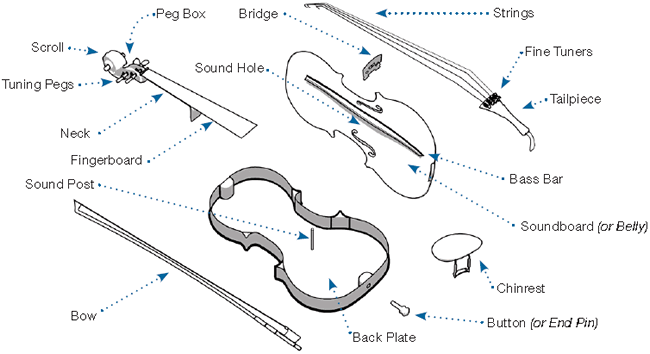
- Neck:
- The neck of the violin includes a ‘scroll’, a ‘peg box’ and an area for the attachment of the fingerboard. The curved scroll is just for decoration and does not affect the sound. The peg box holds the pegs to which the ends of the strings are attached.
- Tuning Pegs:
- These are used to tune the violin. Each string is wound around its own peg, which is turned to increase or decrease the tension of the strings.
- Fingerboard:
- The fingerboard is normally made from ebony (dense, black wood). Musicians press the strings against the fingerboard with their fingers when playing notes.
- Strings:
- The four strings of the violin are usually tuned to the notes G-D-A-E. However, they may be tuned differently, depending on the type of music to be played. Some folk musicians tune the strings to the notes A-E-A-E to play dance music and ballads.
- Soundboard (or Belly):
- When the strings vibrate, they cause the soundboard to also vibrate, making the sound louder. There are two ‘sound holes’, each shaped like an ‘f’, which allow the sound to come out of the violin. Running along the underside of the soundboard is the ‘bass bar’ which affects the tone of the violin.
- Bridge:
- The bridge is not glued to the violin but is just held in place by the strings. Its role is to transfer the vibration of the strings to the soundboard, causing it to vibrate and add to the volume of the sound.
- Fine tuners:
- After tuning the violin with the tuning pegs, finer tuning can then be done by using the fine tuning knobs. Not all violins have fine tuners.
- Tailpiece:
- The tailpiece is held in place by the strings and the circular button located at the end of the violin. It is not glued to the soundboard but sits just above it, so that the soundboard is free to vibrate.
- Chinrest:
- Musicians rest their chin on the chinrest so that the violin can be held steady when being played. They often put a cloth over the chinrest to prevent ‘practice marks’ and rashes on their chins.
- Button (or End Pin):
- This part fits into the end of the violin and holds the tailpiece in place.
- Back Plate:
- This part can be made from a single piece of wood (usually maple), or from two separate halves glued together. Like the soundboard, it also adds to the violin’s sound but does not vibrate as much as the soundboard.
- Sound Post:
- The sound post is a piece of wood wedged inside the violin between the flexible soundboard and the stiffer back plate. It transfers sound through vibrations from the soundboard to the back plate. It is known as the ‘soul’ of the violin because the position in which it is placed influences the tone of the instrument.
- Bow:
- The ‘stick’ part of the bow is traditionally made from wood, but today other materials such as fibreglass and carbon fibre are also used. Strung between the two ends of the bow is a ribbon of horsehair. A screw at one end allows the horsehair ribbon to be adjusted to the correct tension for playing.
The history of the violin/fiddle
The violins played today have developed from the bowed instruments played in the Middle Ages (400 A.D. to 1500 A.D.) and the Renaissance (1400 A.D. to 1600 A.D.).
Italian Andrea Amati was one of the earliest violin makers. He first created violins in the 1500s, and his family continued the tradition. Other famous violin makers include Antonio Stradivarius, Giuseppe Guarneri and Jacob Stainer.
Violins were traditionally played at weddings, birthdays, funerals and other significant occasions. The instrument was often considered to be for the lower classes, until it was made popular by great composers such as Vivaldi, Bach and Mozart. Violins and fiddles have been, and are, used by many cultures from around the world.
Different types of violin/fiddle
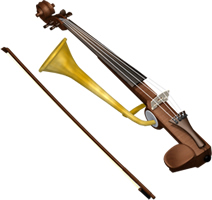
Stroh Fiddle
Violins can be acoustic or electric and can be used to play folk, traditional, classical, jazz and popular music.
Violins, as we know them, are usually made of wood, but fiddles from Northern and Southern Africa had bodies made of heavy card or tin cans and the Apache Indians even used hollowed-out cactuses to make their fiddles.
Many different types of fiddles and violins are still found in countries around the world. For example, Northern Ireland has a single-stringed Stroh Fiddle which has a horn on the side to amplify its sound.
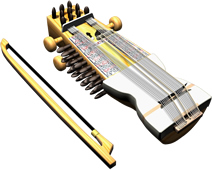
Sarangi
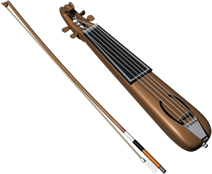
Kit Violin
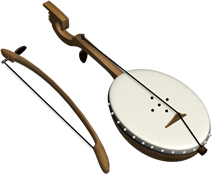
Gusle
Violin/fiddle fast facts
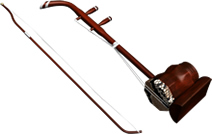
Erhu
- The word ‘violin’ comes from the Middle Latin word ‘vitula’ which means stringed instrument, and ‘fiddle’ comes from the Old English word ‘fithele’.
- A Stradivarius violin made in 1707 was sold for US$3.5 million at an auction in New York in 1998. The violin is one of only 620 original Stradivarius violins left and had the nickname ‘The Hammer’ because its first owner was a Swedish man named Christian Hammer.
- A person who makes or repairs violins is called a luthier and an archetier makes the bow. Amazingly, it can take up to 200 hours to make a good-quality violin!
- Modern violins are constructed from over 70 pieces of wood.
- Violin strings were originally made from the lining of the intestine of a sheep, goat, horse or pig. Now they have a synthetic nylon core encased in steel or aluminium.
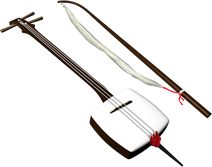
Kokyu
- To create the friction (or grip) necessary to vibrate the strings of a violin as the bow is dragged across them, musicians rub the hair of their bow with rosin made from tree sap.
- Playing the violin is good for you mentally and physically: violinists can use both sides of their brain more easily and burn approximately 175 calories an hour while playing the violin!
- Some novelty violins have been made so small as to fit in a matchbox.
- In 1759, Joseph Merlin from Belgium invented roller skates. He decided to introduce his invention by roller skating into a ballroom full of people while playing the violin. This should have been an exciting showcase of his invention, except that he did not know how to stop and crashed into a full-length mirror, shattering his violin.
- The fastest violin player in the world is musician Ben Lee. He set a new record in April 2010 by playing all 810 notes of ‘Flight of the Bumblebee’ in 64.21 seconds. That’s almost 13 notes per second!




